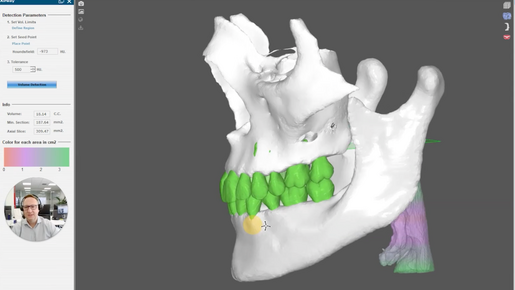
By Digital Smile Design
⋅ 3 min read
⋅ Updated Jun, 2025
Imagine the scene: a dentist is excited to ‘go digital,’ so they impulsively invest in something like a brand-new scanner or a 3D printer. The goal is clear: to modernize, improve patient care and stay ahead. But a few months later, the shiny new tool is still sitting in the corner. It’s barely been used and no one on the team is sure how it fits into the workflow. Now the dentist is left wondering if the investment was worth it at all.
Sound familiar?
Unfortunately, this is a common misstep we see when it comes to digital dental technology. Many clinics want to embrace a digital workflow but they often assume that going digital just means buying digital equipment. In reality, the technology alone isn’t what transforms a practice. It’s how you use it, how it fits into your day-to-day and whether your team feels confident making it part of the patient journey.
So before you invest in another tool or blame the ones you already have, let’s talk about how to make smarter tech investments that support your workflow, team and long-term growth.

The problem with underused dental equipment
There’s that intraoral scanner in the drawer, a 3D printer that only gets touched once a month or software that looked amazing in the demo but never became part of your daily workflow.
Most of the time, this happens not because the tools don’t work but because they were never properly integrated into the clinic’s workflow. And that doesn’t just mean wasted money. It also means missed opportunities to improve your patient experience, streamline your processes and grow your dental practice.
In other words, it’s a digital dental investment that’s failing to deliver the return you wanted.
Top reasons digital dental technology fails to deliver ROI
1. Lack of team training and confidence
Most teams don’t get the level of training they really need. Maybe there was a quick onboarding session or one person on the team figured out the basics. But when things get busy, people fall back on what they know and new tech gets pushed aside.
If your team isn’t confident, they’re not going to use the tool. Not because they’re unwilling, but because they don’t want to mess something up.
2. Poor integration with your workflow
Even the most powerful tool won’t get used if it doesn’t fit how you work. If the scanner or planning software adds extra steps, slows you down or causes confusion, it becomes a burden.
When your digital tools don’t integrate — for example, your scanner doesn’t talk to your design software or your 3D printer — the whole workflow breaks down. Instead of simplifying your job, it complicates it and drags down the ROI of your dental technology investment.
3. Trying to go fully digital all at once
Going digital doesn’t have to be all or nothing. In fact, trying to upgrade everything at once can backfire. It overwhelms the team and disrupts workflows and, in the end, the tools don’t get used properly.
The better path is to take it step by step. Identify a specific clinical need, solve that with the right tool and build from there.
4. Buying based on excitement, not strategy
It’s easy to get caught up in the hype at congresses or trade shows. A new tool looks impressive, there’s a lot of buzz about it, and you make a quick decision. But if it’s not aligned with your clinic’s vision or priorities, it often ends up underused.
Instead of buying on impulse, ask yourself if it truly fits where you want to take your practice over the next five years. That’s how you make digital dental technology part of a long-term ROI strategy and not just a short-term expense.
How to get more from your existing dental tech
Pinpoint where tech can actually help
Before investing in anything new, take a moment to ask yourself where things are currently falling short. Is something slowing you down? Are patients not understanding their treatment options? Does your team keep running into the same issues?
That’s where digital tools can really make a difference. But only if you’re clear on what you’re solving first.
Prioritize interoperability and workflow alignment
You don’t need the flashiest version of every tool. What you need is a digital system that actually works together. Your scanner should connect smoothly with your design platform. Your planning software should support your lab or in-house production process. Everything should feel like one continuous workflow and not a bunch of disconnected steps.
This is what separates clinics that own digital tools from clinics that use digital dental technology efficiently and get strong returns from it.
Build training into your tech rollout
No team wants to work with tools they don’t fully understand. So to help them, build training into your processes by making time for refreshers, reinforcing the workflow and encouraging questions.
Review and adjust regularly
Every few months, take a step back and ask: what are we actually using? What’s sitting idle? What could we improve?
You don’t need to make massive changes each time. Just small course corrections to make sure your digital dental technology is still delivering value and helping you grow.

5 questions to ask yourself before you invest in dental tech
If you’re thinking about adding something new, start by asking yourself these five questions. They’ll help you avoid common mistakes and make smarter decisions that actually pay off.
1. What specific problem am I trying to solve?
Be honest. Are you buying something because it’s trending or are you trying to fix a real problem in your workflow? Clarity here will save you time and money later.
2. Will this fit into the way we currently work?
Think about your day-to-day life. Will this tool make things simpler or more complicated? If it can’t slot easily into your routine, it might not get used.
3. Do I have a plan to train the team properly?
No tool works without buy-in from the people using it. Do you have time and resources to train the team and will support be available after the sale? Training matters more than most clinics realize.
4. Will it integrate with the tools we already use?
One of the biggest tech frustrations is when devices don’t talk to each other. Make sure anything new works with your existing systems or that you have a plan to bridge the gap.
5. Can we measure success?
If you don’t define what success looks like, you won’t know if the tool is working. Is it about saving time? Increasing treatment acceptance? Reducing remakes? Set your goals up front so you can track your ROI later.
Turning dental tech into daily impact
Digital dentistry starts to deliver results when you’re making the most of what you have. Success isn’t about collecting devices, it’s about using them confidently, consistently and with a clear purpose.
So take a moment to assess your current setup. What’s being used to its full potential? What’s collecting dust? And what could make a difference with a bit more training or better integration?
If you’re wondering what to invest in next — or how to make better use of what you already have — watch our free webinar: The Technology You Should Actually Be Investing In.
In just 45 minutes, Luken de Arbeloa will walk you through how to align your digital decisions with your clinical goals and avoid the most common traps that lead to wasted investments.
Follow us on Instagram, Facebook, and LinkedIn to stay updated on our course promotions and flash sales that we run during the year.



